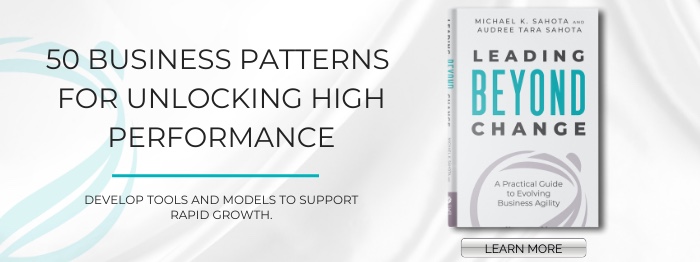What does it mean to lead during turbulent times? During calm times, everything is in order and change can happen slowly. Many leaders can be successful in that kind of environment; it’s not that hard. However, leading in turbulent times is a different story altogether. In this article, we’ll discuss how to be an effective leader during periods of rapid change, upheaval and crisis such as the COVID pandemic.
Doing Business in a VUCA World
Leading in turbulent times is challenging because there’s chaos embedded with a state of rapid change. There’s a common business term called “VUCA,” which represents the business world: It is volatile, uncertain, complex, and ambiguous. One can say that in business there is always uncertainty and there can always be a crisis.
Our world is changing faster and faster, and the pace of change itself has increased. As a result, the “VUCA-ness,” or level of volatility in our world, has increased.
Many leaders and organizations are experiencing a high sense of turbulence and change. It’s hard for them to be grounded, stable, and clear enough to lead their organizations to success. Leaders are being called to step up to the challenge. How do we succeed with that?
The first step to success is to understand that we are falling into the traps. From there the patterns for success become clear and compelling.

Trap #1: Looking To the Past
One of the most common traps for leaders during turbulent times is looking toward the past and trying to find solutions for today from the solutions of yesterday. While it’s important to look at the past for guidance and understanding, we need to look toward new solutions for present challenges.
“A problem cannot be solved from the same level of consciousness that created it”- A. Einstein

Overweighting on past information and putting our faith in tradition is a very common trap that disallows leaders from functioning effectively in turbulent times. Thinking, “This is the way we’ve always handled it,” is a trap. Besides, why would anyone do the same thing and expect it to change or solve problems?
Success Pattern: Openness to Change
Progressive leaders are ready to challenge anything and everything. They ask, “Why are we doing this? How does this serve us now?” This success pattern is an openness to change.
History or tradition is not relevant to discover what is needed to thrive in this current business climate? . What’s relevant is asking, “What do I need to do as a leader?” or “what do we need to do as an organizational system?” Business as usual will not make anything more efficient or sustain success.
Trap #2: Business-as-Usual
There’s a huge trap related to traditional management: following the pattern of “business as usual”. When an organization acts as a traditional business where there’s a hierarchy and bosses, chances are it’s not going to survive in turbulent times. Those structures are simply not suited for a rapidly changing world.

Be wary of traditional leadership and business practices that look like 90% of businesses out there – operating on what’s taught in MBA schools. This approach is wholly insufficient to rise to the challenges of today.
Success Pattern: Step into the Unknown
Leaders who are able to adapt to turbulent times are ready to let go of these business-as-usual patterns. They step into the unknown and explore different ways of leadership and models of business. They understand that “What got you here won’t get you where you want to go.”
A more evolved leadership style is needed to operate in uncertain times. This means not just a shift in leadership function but also a corresponding shift in how the organization itself functions. It’s about moving toward an organization with much higher engagement to achieve higher performance. Here the focus is on enabling employees to develop leaders at all levels. This is what creates the adaptability that is needed to navigate turbulent times.
Trap #3: Trying to Fix People or Systems
The next trap is thinking that the leadership and organizational systems can function the same and just adopt new policies and practices. When transformation programs like Agile or Digital Transformation, SaFe, Lean etc, are focused on worker-level shift and functioning it leads to a mis-match with the rest of the organization’s functioning.
Success Pattern: Change the Leadership Team First
The positive pattern is to focus on changing the leadership team and how they function. Looking at their decision-making structures, collaboration, psychological safety and trust.

When we do that, leaders form a template for the rest of the organization to follow. Here the leadership starts functioning in more adaptable ways that create a positive environment for people to show up at their best. Over time, the rest of the organization naturally follows suit. If we want adaptability in the organization, we need to start with those who have power and authority – at any level.
Trap #4: Low Adaptability
In turbulent times, we need organizations that are highly adaptable. Most organizations are set up so that they can’t adapt quickly. Moreover, they’re not set up to increase their ability to adapt. When the people in the organization have a small or flat growth rate, the organization as a whole will be limited in its ability to adapt.
Success Pattern: Building Evolutionary Capabilities
The positive pattern is about making growth and evolution the norm for every person, from the top leader to the lowest-level worker in the organization. We call this Production Capability – creating a learning culture to go faster and deliver smarter. When all the people in the organization are adapting and evolving themselves, the organization as a whole will adapt and evolve very rapidly.
When people individually have a high rate of evolution, the whole organizational system will have a high rate of evolution. This allows it to keep up with the rapid pace of change and turbulence in the environment. Changes are not a problem because the rate of change is so high. The key success factor is that the top leadership is modeling a very high rate of change. Leadership in turbulent times is firstly about personally becoming adaptable with the ability to flawlessly navigate complexity and secondly about developing others and the system itself.
Final Thoughts: Survival Is Optional
Unfortunately, most organizations and leaders are not set up to thrive in this turbulent, changing world. Most organizations are just counting down the days or years until a threat comes in and then it’s too late to change.

Most executives have an average lifespan of 3.9 years, according to M&A Executive Research, even delaying changes for the long term success of an organization. Some management styles are to hold onto the proverbial rock until the transformation fizzles out.
Our advice to leaders and organizations is to get ahead of the curve and invest in leadership growth now while things are fine. It starts with increasing the adaptability, survivability, and thrivability of the leadership system. What we call Evolutionary Leadership. And it’s not just about building the future, it’s about creating a higher performing organization now.



